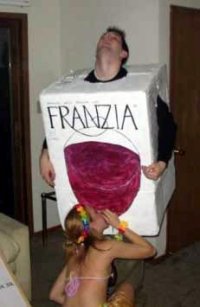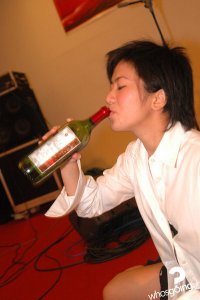
A view of the wine production area of Château Figeac in St.-Émilion, where wines are re-classified every 10 years.
ST.-ÉMILION, France — For François Despagne, it was the challenge of his lifetime.
His family owned the same vineyard in this southwestern part of France for seven generations. But in 1996, in the reclassification of St.-Émilion wines that occurs roughly every 10 years, Château Grand Corbin-Despagne was downgraded from grand cru classé, one of the highest ratings.
The family disagreed but did not challenge the ruling in court.
“When you’re declassified, you’re the ugly little duckling,” Mr. Despagne said. “People lose faith in you.” The blow is also financial.
One Bordeaux broker called him then and said: “You’re in trouble, you’re declassified. I’ll buy your stock for half price,” Mr. Despagne recalled, still disgusted. “It was hard, morally.”
Mr. Despagne, trained as a biologist and oenologist, went to work. He persuaded his family and the banks to invest some $2 million to modernize the business. More important, he dug 150 holes to analyze the soil on his 66 acres and identified 53 parcels. Where the soil was richest, he grew grass between the rows of vines to force the roots to dig deeper. He put in 27 new vats to make smaller batches, and reduced yield by 25 percent to get a more concentrated wine.
In September 2006, his labor and his family’s faith were rewarded. Although the new classification downgraded 11 other chateaus, it restored Grand Corbin-Despagne to grand cru classé, and Mr. Despagne printed new labels, brochures, corks, capsules and wooden cases. The family celebrated; the workers had a huge party.
But then the bomb went off this year. On July 1, an administrative court, hearing an extended appeal from seven of the newly declassified chateaus, threw out the entire 2006 classification — and threw Mr. Despagne and others who had been promoted into fury and confusion.
The ruling has set families against one another in this beautiful medieval village of 2,500 souls who know one another, marry one another and go to Mass together. Declared a protected site by Unesco in 1999, St.-Émilion, where the Romans cultivated wine grapes, is dominated by a church and a prison tower built in the 13th century.
Now this little area, which contains 770 winegrowers on 13,800 acres classified as St.-Émilion and St.-Émilion grand cru, produces some 32.1 million bottles a year of some of Bordeaux’s finest and most expensive wines. It represents an enormous collective business, with built-in rivalries, that combines science, farming, public relations, fantasy, taste and tough tactics.
And now, judicial and commercial confusion.
The court agreed with the plaintiffs that, because the already classified wines were tasted at a different time than the candidate wines, and because some domains were visited and some not, the classification was “arbitrary” — even though the same procedure had been followed in 1996.
Faced with no classification for the 2006 vintage, which was just being bottled, the French Legislature restored the 1996 classification for three years, or until all court appeals are finished or a new classification is made. That is fine for most, and especially for those just demoted — but it means agony for Mr. Despagne and the others promoted in 2006 who had their reward ripped away.
Mr. Despagne spits out the words, like a bad vintage: “It’s not good for the image of St.-Émilion, it’s not good for justice and it’s not good for the community of St.-Émilion.”
The ruling also punished two other chateaus, Pavie Macquin and Troplong Mondot. They were elevated in 2006 to the rarefied air of premier grand cru classé B, which brings even more rarefied prices.
Xavier Pariente, who owns Troplong Mondot with his spouse, is beside himself.
“We are the laughingstock of everyone; everyone feels this injustice that we are living,” Mr. Pariente said. “If we wanted to damage St.-Émilion, there would be no better way.” Jean-Pierre Taleyson, the cellar master, said, “When I heard about the judgment, I nearly started to cry.”
For Nicolas Thienpont, director of Pavie Macquin, the court ruling is like “a donkey on the roof.” It is absurd, he said, “to promote the troublemakers while the good students get demoted.” He has already bottled and labeled his 2006 vintage under the new, higher classification, expecting a final ruling to confirm the promotions. “It’s a risk, but I feel morally premier grand cru classé,” he said. “We worked 10 years for this!”
Even the patriarch of St.-Émilion, Thierry Manoncourt, 90, who owns the magnificent Château Figeac, has his grievances. His wine was not affected by the 2006 classification, but his application to be promoted from premier grand cru classé B to A — to join the two most elevated names in the region, Ausone and Cheval Blanc — was denied again.
Not because of the quality of the wine, the reviews, the elegance of the chateau or any other obvious reason, he fumed. “But because they said my prices were not as high! It’s a circle — you can’t sell at the same price because you’re not premier grand cru classé A!”
Mr. Manoncourt has the standing to reject some of the slavish following of the preferences of wine raters like Robert M. Parker Jr., whose influence over the American market remains extraordinary. Mr. Parker likes deeply colored Bordeaux, so many here alter the temperature of their first maceration to extract the most color, even if it slightly affects the taste. Mr. Manoncourt, offering a glass of a 2001 Château Figeac that Mr. Parker did not like at a first tasting, recalled saying, “Cher Bob, I don’t manufacture ink.”
As to the current uproar, Mr. Manoncourt said gently, “It’s always unpleasant when there’s a controversy — especially when it’s not very transparent.” And when, he implied, there is so much money and pride at stake.
Pierre Lurton, who runs Château Cheval Blanc for the multinational LVMH, said he approved of the regular reclassification of St.-Émilion wines, which he called “courageous” because it kept winemakers on their toes.
But the court ruling, Mr. Lurton said, “puts everything into disequilibrium. It’s confusing, and it gives the sense there’s something wrong in the system.” For Mr. Despagne, he said, “it’s totally unjust — it’s like he regained heaven, and now he’s thrown back into purgatory.”



